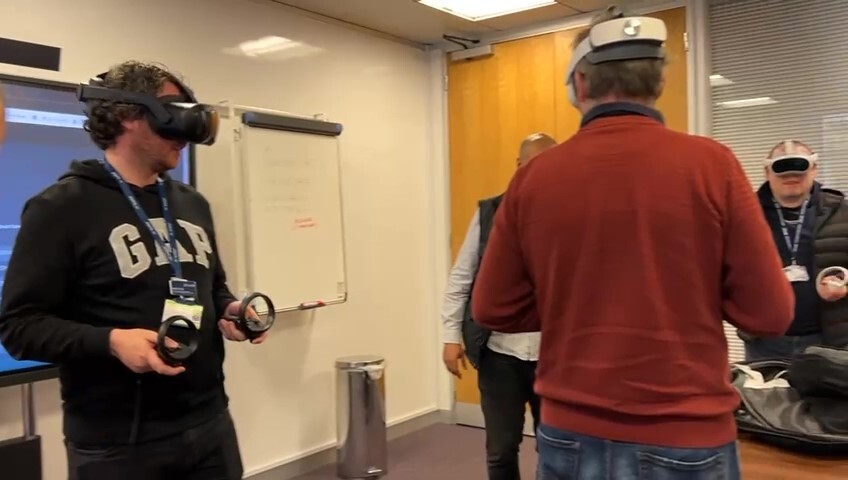Case Study: Transforming Driver Training at ScotRail with ARuVR
5 January 2024
The Client
Nestled in the dynamic rail industry of the United Kingdom, ScotRail emerges as a prominent player, continually seeking innovative solutions to enhance its operations and services. At the heart of this quest for innovation is Sodi Kakouris, Digital Learning Manager at ScotRail. His role at ScotRail is pivotal and he leads the digital learning team. Together, they are at the forefront of transforming driver training methodologies, steering ScotRail towards a future where technology and tradition converge for enhanced learning experiences.
Reflecting on this journey, Sodi remarks, “Innovation in training is not just about embracing new technology; it’s about transforming our approach to learning, making it more engaging, efficient, and tailored to the modern needs of our staff and the rail industry.”

The Drive for Change
Historically, driver training at ScotRail was entrenched in conventional classroom-based methods, with minimal practical, hands-on experience. This approach, while standard across the rail industry, posed limitations in terms of efficiency and effectiveness. The impending technology changes of new, eco-friendly rolling stock, including electric, battery-powered, and hydrogen trains, further underscored the necessity for a training overhaul.
The ARuVR Solution
The solution emerged in the form of cutting-edge ARuVR technology. This initiative marked a significant shift from traditional training methods to interactive, extended reality-based modules. The primary objective was to furnish trainees with a realistic, hands-on experience without the logistical challenges of using actual trains. This transition wasn’t just about adopting new technology; it was about fostering a more interactive, immersive, and efficient learning environment.
Implementation and Challenges
Implementing ARuVR technology was not without its challenges. Sodi and his team conducted a successful pilot project, which paved the way for a full-scale rollout. The team faced the dual task of ensuring the content was up to the mark, adhering to stringent safety standards, while also navigating budget constraints. They opted for high-spec tablets over VR Headsets to enhance user comfort and manage costs effectively.
Outcomes and Benefits
The results were nothing short of transformative. The training programme became significantly more efficient and effective, with a notable decrease in errors and misunderstandings. An added benefit was the newfound flexibility for trainees, who could now revisit and practise with Extended Reality (VR, AR, and MR) courses independently, a luxury previously unavailable. Moreover, this technological leap facilitated enhanced collaboration across different departments, breaking down long standing siloed work practices within ScotRail.

Looking Ahead
Looking to the future, Sodi envisages the expansion of ARuVR technology beyond driver training. Prospects include its application in onboarding processes and engineering training. A parallel project is underway, focusing on training for the new rolling stock, in line with ScotRail’s commitment to achieving carbon neutrality by 2035.
Conclusion
Sodi Kakouris’ leadership in integrating ARuVR platform at ScotRail is a testament to the power of innovation in transforming traditional practices. This case study not only highlights the significant strides made in driver training but also underscores ScotRail’s commitment to safety, efficiency, and sustainability. As the rail industry evolves, ScotRail stands at the forefront, ready to embrace the challenges and opportunities that lie ahead.